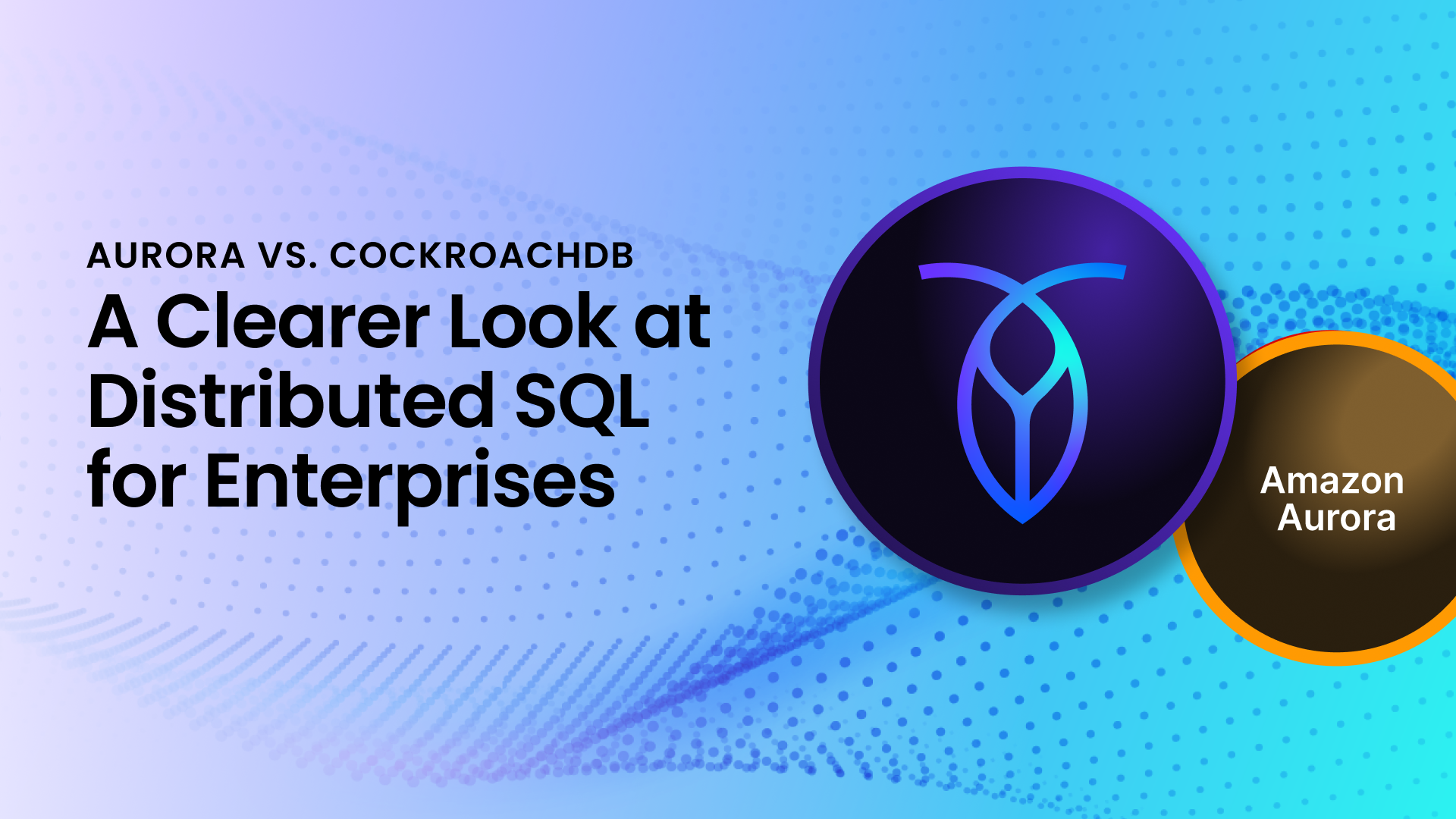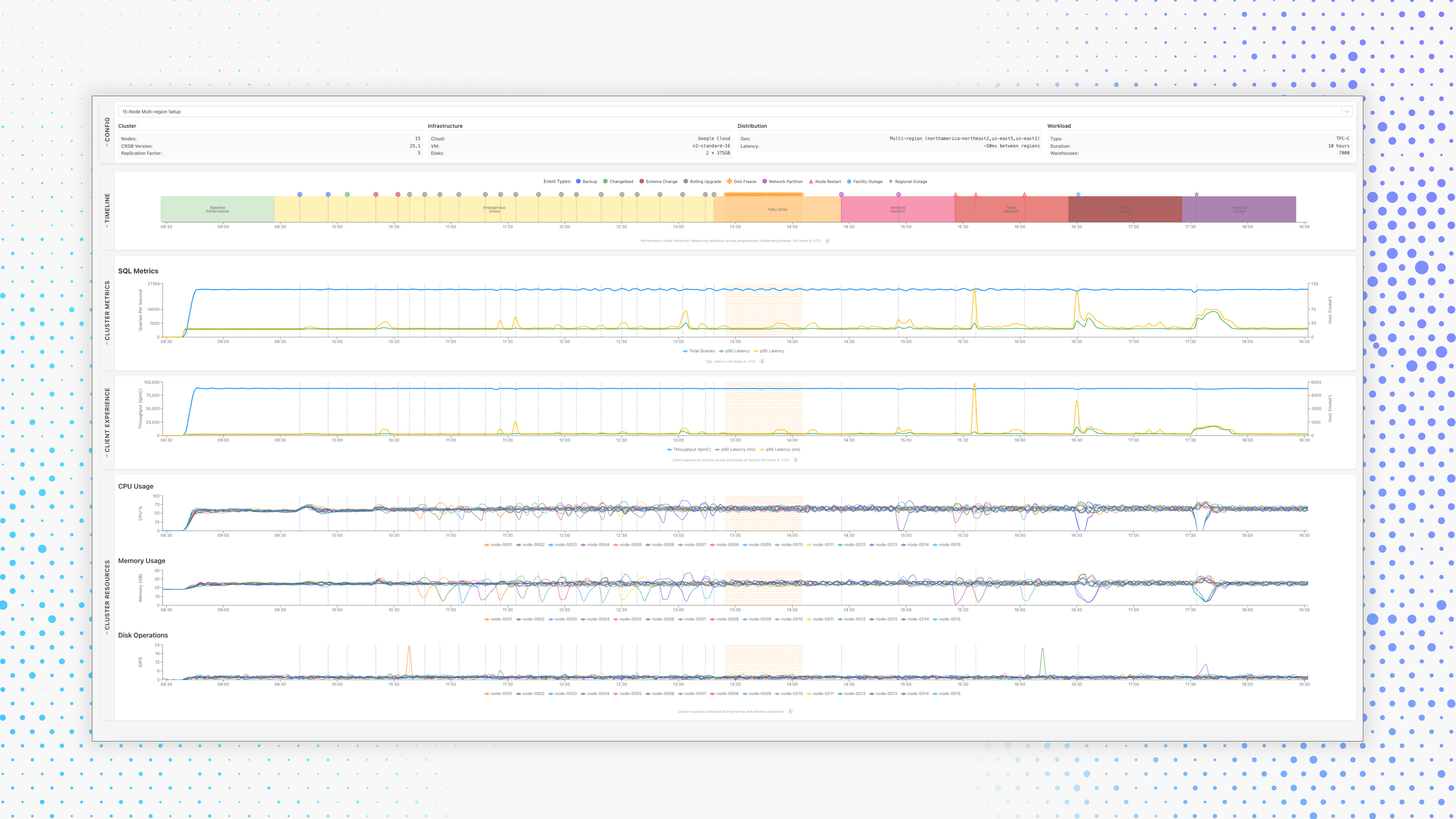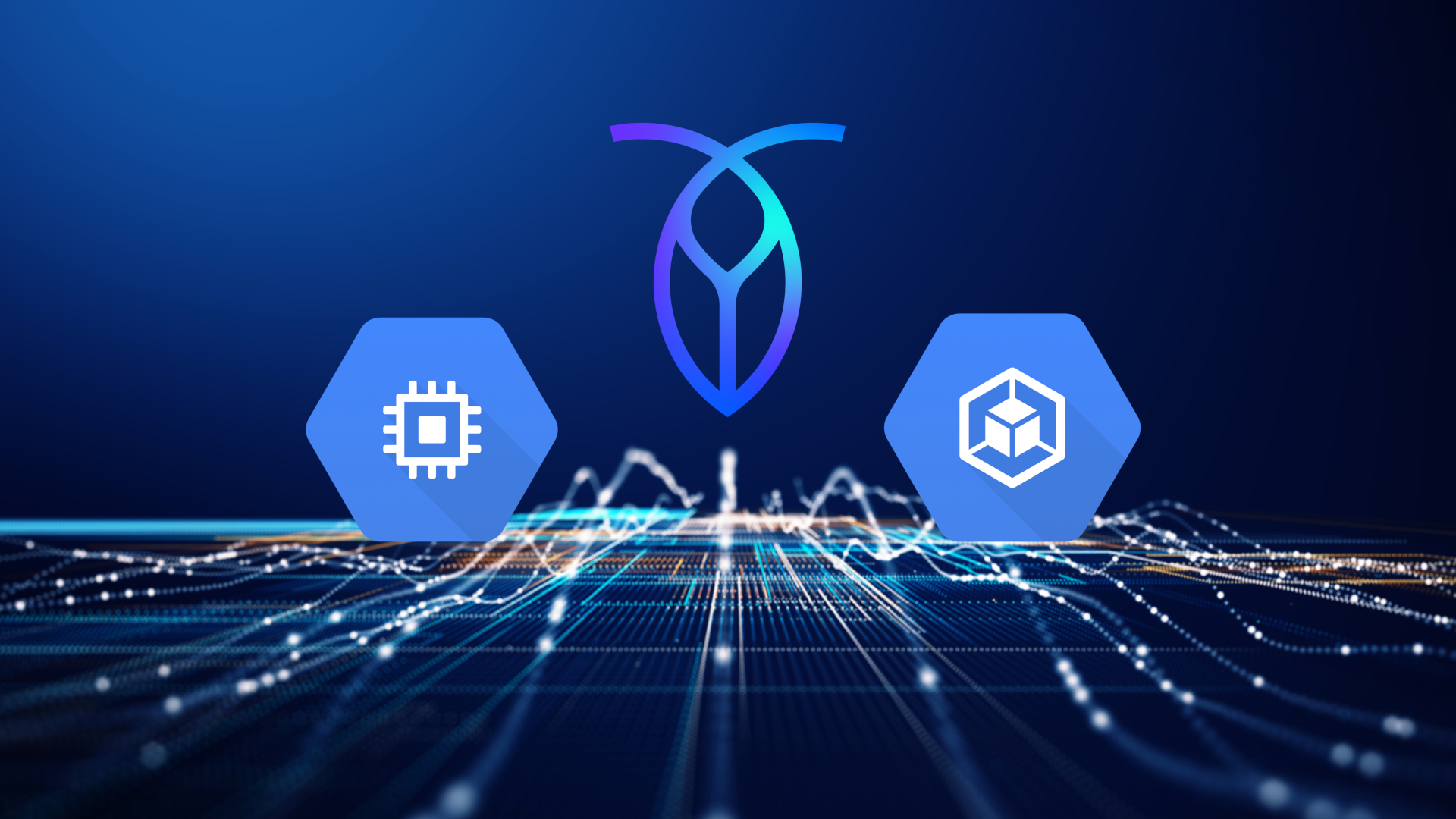As modern applications expand across regions and clouds, the database layer often becomes the biggest constraint on growth. Global user bases, 24/7 availability expectations, and ever-evolving regulations have made the choice of database architecture more critical than ever.
To help you make a better choice we’ve released a new whitepaper, CockroachDB vs. Amazon Aurora & DSQL: A Comprehensive Enterprise Distributed SQL Database Analysis. It takes a clear, technical look at how Amazon Aurora and Amazon DSQL database offerings stack up against CockroachDB when it comes to scale, resilience, and operational simplicity.
Aurora Global Database: Great Reads, Single-Region Writes
Amazon Aurora Global Database has long been a strong choice for organizations standardized on AWS. It scales read traffic efficiently across regions and provides the convenience of a managed PostgreSQL-compatible service.
But its single-writer architecture introduces limitations that matter for modern, global applications. Write-heavy workloads can face performance bottlenecks, and failovers or maintenance events can cause disruption and potential data loss. For enterprises operating across continents or requiring zero downtime, those constraints can quickly become blockers.
Aurora DSQL: Not Enterprise-Ready
Aurora DSQL is AWS’s relatively new attempt (GA May 2025) to solve Aurora Global’s single-writer limitation. With a shared-nothing, active-active design, it supports distributed writes across two regions with a third region acting as a witness.
It’s a smart evolution — but today, it’s limited in scope and maturity. DSQL supports only two active regions, has limited region support, does not support a number of critical PostgreSQL features, and doesn’t yet offer true global availability. For AWS-centric teams running moderate-scale workloads, it’s an intriguing step forward. But for multi-region, global enterprises or organizations seeking multi-cloud optionality, DSQL remains only an early-stage solution. And, DSQL of course is only available in Amazon AWS and not available on-prem or in cross-cloud configurations.
CockroachDB: Distributed SQL Without the Tradeoffs
CockroachDB was built from the ground up to deliver what distributed systems promised: global scale without operational pain. Every node can read and write across any number of regions, even when regions are distributed globally, while maintaining strong consistency and transactional guarantees.
It enables:
Zero downtime for upgrades, schema changes, and failovers
True global consistency across regions
Flexible deployment on any cloud (ours or bring-your-own-cloud), across multiple clouds, and on hybrid or on-prem environments
PostgreSQL compatibility, simplifying migrations and integration
The result: enterprises can scale their applications globally with confidence, without the vendor lock-in or operational complexity of AWS-only solutions.
Why This Comparison Matters Now
The database landscape continues to shift. Enterprises are demanding architectures that handle failure gracefully, scale seamlessly, and avoid single-vendor dependence. Aurora Global Database and DSQL represent important steps, but CockroachDB shows what a mature, enterprise-grade distributed SQL system can already do today.
If your organization is planning for global scale, resilience, and architectural flexibility, this whitepaper provides the clarity you need to choose confidently.









